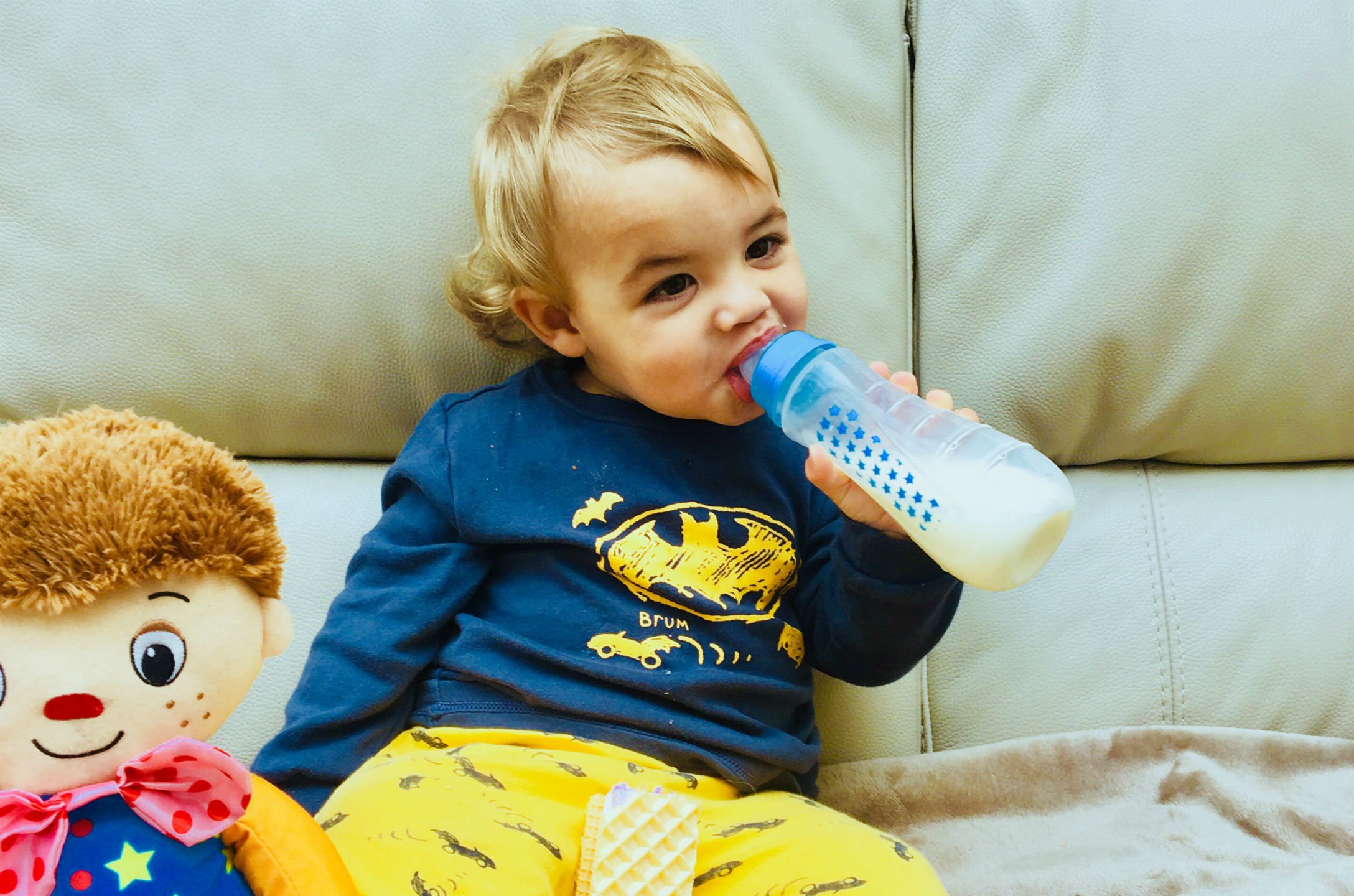
As your baby approaches their 1st birthday, you may be wondering about switching your little one to cow’s milk. Although not all families will choose to switch to cow’s milk around their baby’s first birthday, many do wonder about the option. Here’s what you need to know about switching to cow’s milk at 11 months or later.
What the experts recommend
For the first six months of your baby’s life, the rules are pretty simple for what they can drink: The American Academy of Pediatrics (AAP) says breast milk or formula only. That means no:
- juice
- cow’s milk
- plant-based milk
- plain water
Those rules are in place because your baby gets all the nutrition they need through formula or breastmilk for the first six months of life.
After six months, or whenever your baby starts to accept solid foods, you can offer small sips of water, but experts still recommend that you avoid anything else until your baby’s first birthday. This is to avoid babies drinking anything harmful to their health, like sugary drinks, as well to ensure that their small stomachs aren’t filled up with anything other than the nutrition they need from breast milk or formula.
Between 12 and 24 months, the AAP, along with other leading health organizations, says that children can be introduced to pasteurized whole cow’s milk. “Whether your 1-year-old needs 2 cups or 3 will depend on how much solid food they eat,” the new guidelines state.
Can your baby have cow’s milk at 11 months?

With the recommendation of introducing cow’s milk at 1 year of age, you may wonder about starting cow’s milk at 11 months. Would one month really make that much of a difference?
The answer to that is, it depends. In some cases, yes, introducing cow’s milk a month early could make a big difference. For example, if your baby has had any feeding challenges or trouble gaining weight, switching to cow’s milk too soon could mean they miss out those crucial nutrients they still need from formula or breast milk. Babies who were born prematurely too may need additional time before successfully transitioning.
If you are in a situation where you feel like you can’t wait until 12 months to switch to cow’s milk, you should speak to your baby’s pediatrician about your options.
Tips for transitioning

When you are ready to switch your baby to cow’s milk, here are a few tips to help make the transition:
-
Warm the milk. As adults, we are accustomed to the idea of a cold glass of milk, but for babies, warming the milk can be the difference between them accepting it or not. For instance, despite being apprehensive about the switch, Juliet Izon found that her daughter adjusted quickly with warm milk. “Surprisingly, once the milk was warmed (cold milk was and still is a definite no for her), she gulped down the whole bottle like a champ,” Izon described on her blog.
-
Stick to the guidelines. Offering too much cow milk can have serious consequences. “Drinking too much cow’s milk can lead to iron-deficiency anemia,” explains Dr. Liz Donner, a pediatrician. Dr. Donner recommends that after 1 year of age, babies have no more than 24 ounces of cow’s milk per 24 hours.
-
Make it gradual. While toddlers may do just fine with switching to cow’s milk cold turkey, others may need a little more time to adjust. To assist with that, some parents have found it helpful to transition gradually instead of all at once. For instance, Nicolette Siefken switched her to daughter to whole cow’s milk around the 13-month mark and took six full weeks to transition. “I began [by] mixing 3 parts breast milk (or formula) to 1 part whole milk,” she notes.




